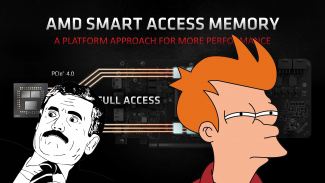You may have noticed that a video card looks like a separate computer inside a computer. These devices have their own BIOS, a separate set of memory, their own power circuits and, of course, their own processor, even it called GPU, not CPU. It is easy to guess that they have similar and different features with the central processor, but they need to communicate: it is the central processor that commands the video card.
Therefore, for interaction, the processor often places copies or a cache of data in RAM to work with a video card. Then it transfers such information to the card via the PCI bus. Usually, the area for storing such information was limited to the first 4 Gigabytes of RAM.
And since modern software, operating systems and processors began to work with 64-bits, then much more space must be managed. And after 32-bit, where there was a limit of only 4 Gigabytes of data, now hardware and software can handle much larger values at the same time (in theory, up to 16 Exabytes, in existing hardware implementations there are only 256 Terabytes).








